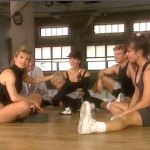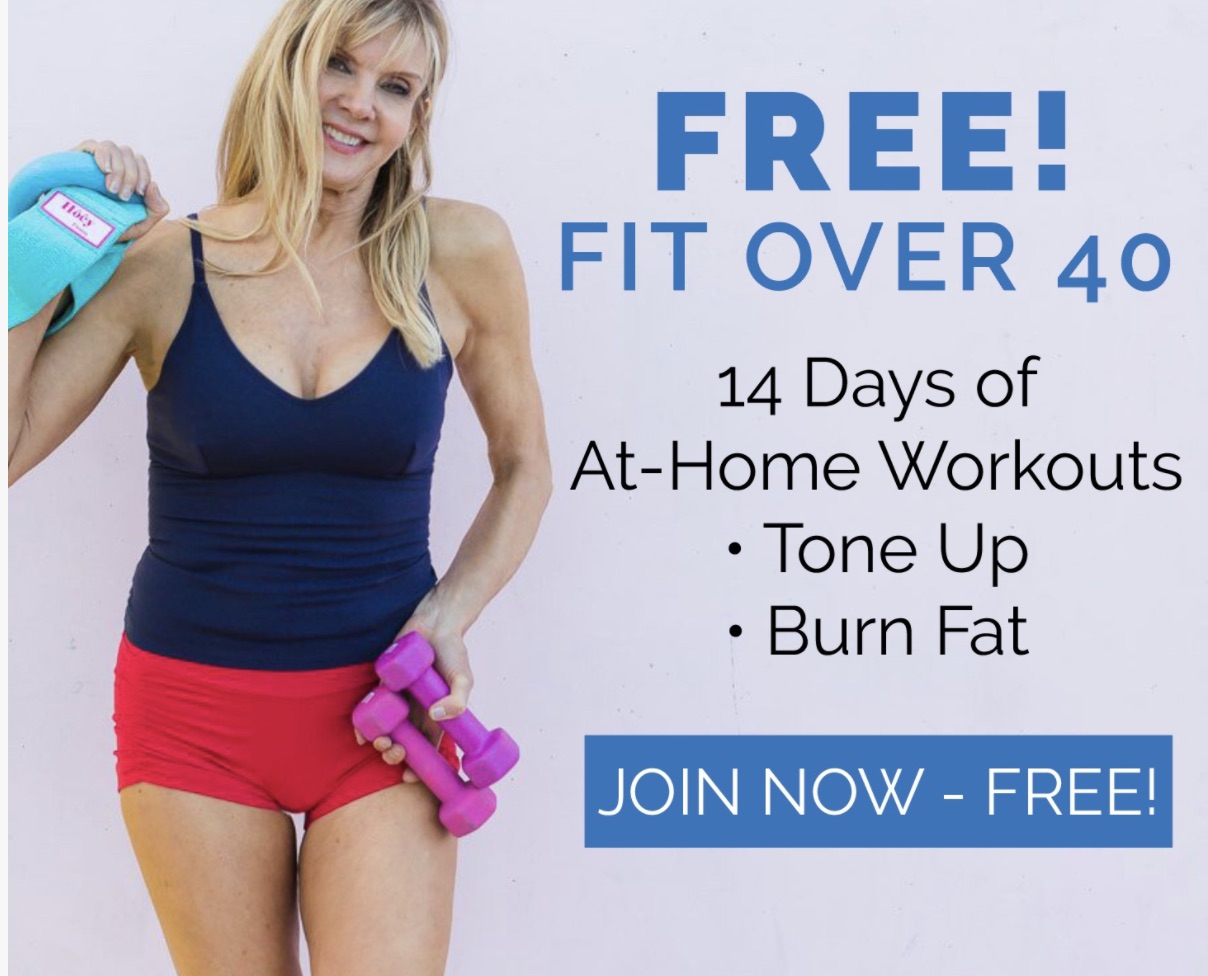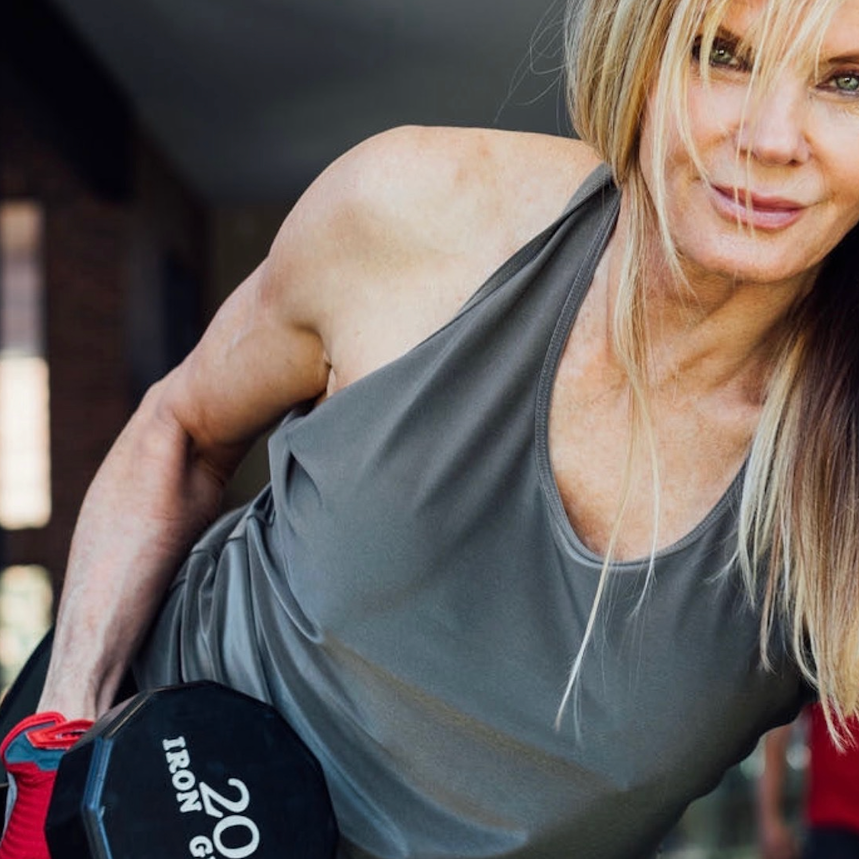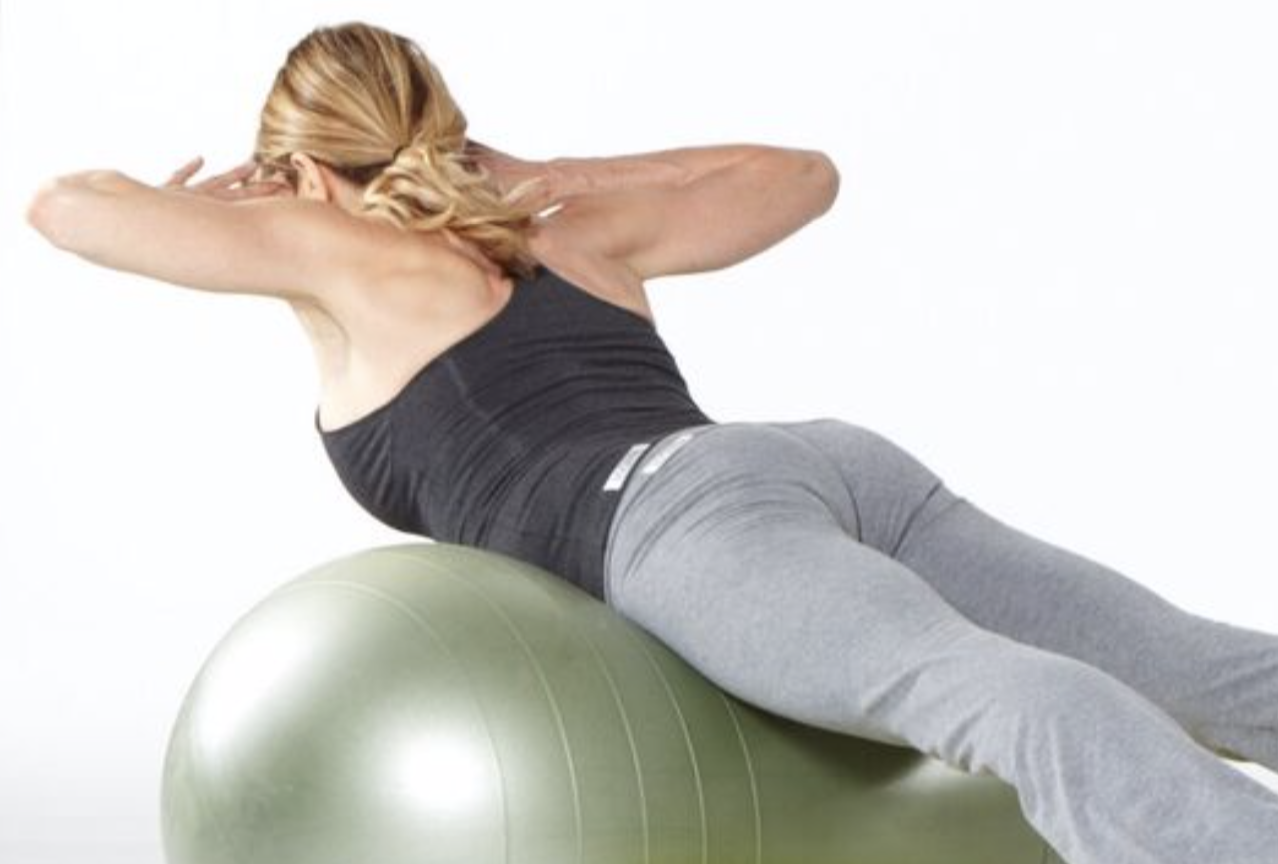Episode 30 | Dr. Sara Gottfried, M.D. | Younger
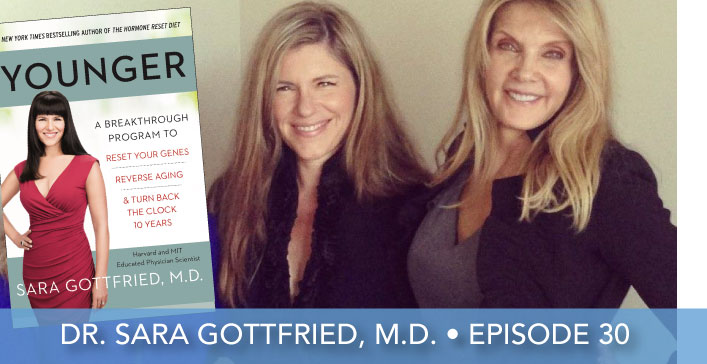
CLICK PLAY!
FAMILIAR WITH PODCASTS? LISTEN ON iTUNES!
Follow along with the transcript
Kathy Smith: Well, let’s just jump right in. We’ve all been conditioned to believe that genetics rule, that you’ve been dealt this deck of cards at birth and your genes pretty much determine your destiny. But in your book, you talk about the topic, and I love the way that you put it. You say, “Genetics loads the gun and the environment pulls the trigger.” So, can you explain what you mean by that, a little bit about genetics and environment. Which one really determines how we’re going to–how healthy we’re going to be?
Sara Gottfried: I’d say environment, by a mile. It’s really your lifestyle choices that are making a difference in your healthspan. And by healthspan, I mean the period of time that you live disease free, feeling fantastic, looking like Kathy Smith if all goes well. You’re right that we were trained–I was trained in medical school to think about how we’re stuck with the genes that we have. But what we’ve learned in the past 10 years especially is that you’re not stuck with the way that the genes are expressed.
So, this is a scientific concept that sometimes can make your eyes glaze over. So, I’ll try to make it as fun as possible. This concept is called epigenetics. So, epigenetics is basically the way that your genes communicate with the rest of your body. And here’s the shocking truth. Ten percent of your risk of disease is determined by genetics. Ninety percent is determined by the environment, which mostly is your lifestyle choices.
Kathy Smith: It’s unbelievable. Even when I see that statistic, it’s staggering. And it’s interesting because people think that aging starts when you’re 60. But aging really starts – what – when you’re around 30. Once you hit 30, there’s that natural decline, and it’s not even perceptible at first. So, the goal in life is to lengthen out this period of energy and youthfulness. Now, in your book you talk about the idea of healthspan as opposed to lifespan. What exactly is healthspan? What is the number one thing people can do to increase it?
Sara Gottfried: Well, I would say that when it comes to your healthspan, you’re right on. Like, you want to start to care about this as early as possible. So, ideally, your 30s, your 40s, your 50s. The way I think about it, Kathy, is that I don’t want to live until age 100 if all I’m doing is lengthening old age. So, I’ve worked as a gynecologist for 25 years. I’ve spent a lot of time in the hospital. I’ve spent a lot of time with older folks. People tend to live to an old age in my family.
What I want is to live like my great-grandmother. So, I had this radical great-grandmother. She was a whole foodist. I think you’d be pretty happy with how many vegetables she ate, Kathy. She was an exerciser. She practiced yoga decades before we had a yoga studio on every corner. She used to show up at our house with whole foods. She’d have a few packages of kale and chard and these vegetables that I had never heard of. She knew how to architect her life so that she was as young as possible as she got older. She had a long healthspan. She had pretty much no diseases, and she died in her sleep at 97. So, when she died, she still could practice yoga. She still could stick her foot behind her head, which I found pretty impressive.
Kathy Smith: Love it. Love it.
Sara Gottfried: I also a grandmother–this was unrelated to my great-grandmother who was on the other side–who died of Alzheimer’s disease. I’m going to get a little quieter here, because it still brings up so much emotion. I spent a lot of time with her, because I grew up close to her. My mother worked full time, so I would see her after school every day. I remember when she was in her early 60s and she would start to get lost driving home from the grocery store. This was before cell phones. It was before GPS. She didn’t have any tools to rely on besides her brain, and her brain was failing her.
When I started to look at the literature on Alzheimer’s disease and look at my own genetic risk, I realized that Alzheimer’s begins in your 30s and 40s. It begins decades before the symptoms show up like they did for my grandmother in her 60s. So, the goal here is to lengthen middle age, to take kind of that feeling of being in your prime that you have in your middle age, which technically is about 40 to 65 and to lengthen that. That’s what healthspan is. So, you’re living without a list of chronic diseases. You’re not taking medications. This is entirely possible, and the cool part is that it’s never too late.
You asked me also about what can you do. What’s the number one lever here? What’s the number one factor? And I have to say, I’m trained as a physician scientist so it’s hard for me to pick just one. But if I’m forced to, I would say, exercise.
So, you get all of these cues, your brain gets all these cues about your hormones and how they’re declining. Your estrogen goes down when you go through menopause, your thyroid can start to slow down. It’s not like a fine Bordeaux that gets better with age. Your adrenal glands just don’t have the pep that they used to have. But exercise is the best way to kind of trick your brain into thinking that you’re younger. So, that’s what I love about exercise that it’s a way of outwitting the brain.
Kathy Smith: Well, you say in your book that aging begins in your muscles. And one of my tag lines I’ve used on my website for years now is that strong women stay young. I love this topic of muscles. So, let’s just maybe focus a little bit beyond exercise. Really into muscles, and why do you say that? Why do you say aging begins in your muscles?
Sara Gottfried: Most women, except for you Kathy, have this problem where they start–maybe they don’t notice it, but they start to get more dough-y as they get older.
I’m 49, so I started to notice this a few years ago. I wasn’t just quite as trim as before. My size 27 jeans, my waist was kind of hanging over the edge a little bit. So, there’s subtle ways that you can notice this – an increase in your abdominal circumference, your waist circumference. Maybe you can’t jump the way that you used to jump.
This came up because I went to a spa with my husband a few years ago, and I was doing this high intensity interval training, and the instructor who was, of course, a gorgeous 25-year-old guy wanted us to jump up on this box. And the box was about 18 inches high. I saw him jump up like a rabbit. He probably could’ve jumped up about three feet high and landed with both feet. Then, I tried to do it and was–I could do it, but it took so much effort.
I’m a former gymnast. I run, I do yoga. I felt like I was pretty fit. But I could see the aging process in the difficulty that I had doing these jumps. So, that’s a subtle example.
Another example is women who just find that they’re–if you track their body mass index, they start to have less muscle mass and more fat mass. So, they may weigh the same as they get older, but they’re not as strong. I really like that tag line from your website, because what I want is for women to either maintain or even increase their lean body mass as they get older. I want them to be able to hike up a mountain as fast as you do, Kathy.
I remember you were at the front of the line when we did a hike around Park City, and I loved your pace. I love how you connected with everyone that was with us. I think we had a group of, maybe, 25 women. You were not winded. You were not winded at all. So, you’re like a poster child of staying young through exercise.
Kathy Smith: I’m blushing here, but thank you for that. I say it over and over again, and that is, I do feel that my vitality, my energy, my youthfulness comes from maintaining muscle mass, because it’s really not–I honestly have to say, you’re going to be turning 50. It’s a big milestone. I just turned 65, which is huge also. But one of the things that I’ve noticed through the years is that every year, I would say after the age of 50 or maybe even like 53, like in the beginning when you first hit 50, you’re hanging onto this image of how you want your body to look.
There’s a point when you get into your more like late 50’s, you start to hang onto this image of how you want your life to look. And you give in a little bit to, “Yeah, I look good, but I want to feel great.” That’s the thing that I feel muscle does. It allows you to look good, but more importantly, it allows you to participate in all the things you want to do from site-seeing in San Francisco and walking those big hills to swimming. What I’m doing this year is I’m biking across America. So, I’m doing a bike ride across America.
Let’s switch into this idea of muscle to fat, because one of the things, again, we usually think about fat as sort of a vanity thing. And, yet, as you discuss in your book, tell us about why is fat such a bad dude when it comes to aging?
Sara Gottfried: Well, definitely a bad dude, because a lot of people think of fat as being a vanity issue. They want to get rid of their cellulite or they don’t like their belly fat. But it turns out that your fat is actually biologically active. It’s not just sitting there inert, taking up space and not looking good. It’s biologically active, and it’s making certain chemical messages that are not good for your body.
So, they make inflammatory messages that get sent to the rest of your body. That’s probably the biggest problem with fat that it’s kind of this biochemical frat part that’s happening in your body, and you want to contain it. You can’t get rid of all of your fat, of course. You have to have some fat to be able to make, especially, your sex hormones which we can talk about. That’s something I definitely want you to make as you get older. When you cross a certain threshold–and for women, that’s somewhere around 28 to 32% body fat–when you cross a certain threshold, if it becomes more inflammatory.
Now, the other problem too is that fat is where you store toxins. And it’s pretty much inevitable these days that all of us get exposed to toxins. Babies are born pre-polluted with almost 300 different chemicals, and your fat is basically the storage place for all of these toxins. So, we want to think about fat in a certain way and to manage it rather than just ignore it or try to get it sucked out or whatever the latest thinking is.
Kathy Smith: Getting back to the book, what I loved about the way you laid it out is you created a seven-week program, and it’s called the Younger Protocol. I like that kind of style, because instead of trying to get it all the first week or whatever, you stage it.
You really talk about how this works on an ongoing basis to kind of repair your body and reduce some of the chances of getting scary diseases like you mentioned earlier, whether it’s Alzheimer’s or dementia or cancer. One of the things I notice is in the seven weeks–and to the listeners out there, it’s just amazing. Each week, you get laid out about what exactly you can do. What exactly, not just the science behind it, but what exactly are the steps you can do to reverse the aging process.
What I found interesting is that you started the first week with food. So, why did you start with food? I always have these two-part questions. Secondly, why–I mean, I know that one of the big things you talked about was managing blood sugar levels. So, can you talk about how those two go hand in hand especially when it relates to aging?
Sara Gottfried: Certainly. I love that you went straight to the heart of what I think is the most important take away from this book. So, thank you for that. I really appreciate your careful reading of the book.
So, food–you know, I have a philosophy of food first. Even though I said that exercise is such an important lever when it comes to growing younger, I think it should start with your food. Certainly, when it comes to weight, you’ve already heard me say that probably less than 10% of disease is contributable to genetics. That’s true when it comes to gaining weight or obesity. So, about 10% is genetics. Sometimes even less. I think about 70% is food and the rest is exercise.
So, all of those components are important, but food is one of the most important levers here. The key is that you want to be eating in a way that turns off the famine genes. I have a lot of famine genes. I’m half Irish, half Jewish from Poland. So, I specialize in famine genes. I have about five of them. What that means is that I’m great at surviving a famine. If I have a meal and, then, I don’t eat for 24/48 hours, I don’t have any problems with my blood sugar, because I have enough fat and I have a state of insulin resistance or insulin block where my cells get numb to insulin, and it just makes me able to survive a famine.
We don’t really need those genes anymore because food is bountiful, but we still are kind of stuck with them because that’s what our ancestors evolved to do. So, food becomes incredibly important for turning on the healthspan genes, turning on the longevity genes that we want turned on and turning off the obesity genes.
So, for instance, I have a gene that programs me to be obese if I eat too many refined carbohydrates. So, I need enough carbohydrates so that I can take care of my adrenal glands that produce cortisol, the stress hormone. and enough thyroid hormones and support my thyroid, but not so much that I gain weight. So, I have a threshold for carbohydrates kind of determined by my genes. What that means is I, then, need to take on that task of determining what that threshold is of carbohydrates and, then, paying a lot of attention to it day to day.
Now, you asked also about blood sugar.
Kathy Smith: Before you jump in there, though, can I–
Sara Gottfried: Sure.
Kathy Smith: It sparked a little memory. When I was writing one of my books, the nutritionist I used in the program, Bonnie Modugno, she was from UCLA. It would be like you and I sitting together and writing. We’d get together for breakfast, and Bonnie sounds very much like you as far as her genetic makeup.
We would always laugh that if the two of us were hiking together and got stranded on a mountaintop, she’d have a much better chance of surviving than I would. Because I have different genetic makeup. But I think what’s important to take away from what you said there is that we are all different and, so, it’s not necessarily a one-size-fits-all when it comes to diet. I think when people ask what is the perfect diet–like, Bonnie and I would sit down and I could have some oatmeal with some walnuts, with some blueberries and some almond milk and that would be a breakfast, because I was going out also for a run after–I was going to go running or whatever.
She would sit down to that same breakfast and she would completely crash and, meaning, her blood sugar levels would spike then they would come back down and she would have a foggy brain. She couldn’t function. So, it’s interesting the differences that we noticed before all this genetic testing, just in kind of cause and effect. You ate something, how do you feel afterwards? What’s fascinating to me, and I want you to just tell the audience how you go about it, is this idea that we can now test for all of this stuff. It’s, like, staggering.
I don’t know. You can go either direction. Either go with blood sugar, because I know that’s really important with aging or how do we find out about out genes. Is it important to test?
Sara Gottfried: Love the story about, Bonnie. It does sound like she’s my soul sister, because I was genetically programmed to be a 200-pound diabetic with thinning hair. So, it’s not exactly the picture that I wanted for growing older. Yeah, it sounds like Bonnie had some blood sugar genes similar to what I have and, also, these famine genes.
So, you’re right, there’s not a one-size-fits-all. I can’t say eat this percentage of carbohydrates and this percentage of fat and this percentage of protein and everyone’s going to be perfect. It’s more a matter of taking the information from this book and applying it to your own life. That is the best type of evidence that you can gather. And there are a couple of things that I think are important here.
One is, I didn’t realize this until I started reviewing about 2500 studies for this book, but your blood sugar goes up as you get older. So, on average, by age 50, it increases by about 10 points. This flies below the radar of most people and kind of their awareness of their health. So, they have this gradual increase in their blood sugar. They feel a little more brain fog. They walk into a room and they can’t remember why. The truth is, the blood sugar is so important.
So, when you’re talking about any week of the seven-week protocol of Younger, blood sugar is a big part of all seven weeks. So, the idea is you want to eat in a way that does not let your fasting blood sugar get too high or your postprandial blood sugar two hours after you eat. So, you want your blood sugar to be relatively stable, which it sounds like yours is, Kathy.
And you want it to not have these, kind of, jagged spikes up and down, because that’s part of what triggers inflammation. It triggers belly fat storage. It triggers the aging the process. It slows down your mitochondria. That’s kind of another connection to how aging begins in your muscles. So, your mitochondria start to get weak and leaky and don’t work as well. Then, what happens is you feel tired when you exercise, especially towards the end of it and at the end.
So, with blood sugar, my goal is for people to really take a look at their blood sugar. Pretty much every time you go to the doctor for an annual test or however often you see your doctor, they will run a fasting blood sugar. The problem is the reference range – what’s considered to be normal in this country includes all the people that have problems with their blood sugar. So, you don’t want to be average when it comes to blood sugar. You want your fasting blood sugar to be between 70 and 85 milligrams per deciliter. So, that’s the lower half of the normal range.
More recent data–this is now cutting edge medical science–is showing that if you’re in the top half of the normal range – so, that means 86 to 99 milligrams per deciliter or even above that, which is where I was when I first started this process. I was 105, 110, not where you want to be. So, people who are in the top half of the normal range have this problem with insulin resistance where their cells become numb to insulin. That’s, basically, taking baby steps towards faster aging. So, we can turn that around with the way that you eat, move, think, supplement, sleep. That’s what we’re addressing with this protocol.
Kathy Smith: Ok, one thing in the protocol that you talk about is this drink that you have, I think daily. It is something that helps with better skin, with better joints, with better vitality. Do you know what I’m talking about, the drink?
Sara Gottfried: Yeah.
Kathy Smith: Ok, so, what is this magic elixir that you have?
Sara Gottfried: It’s a collagen latte. So, let me unpack it for you. I started thinking about this, because I went with my family to Idaho to the Sawtooth Mountains several years ago, and there was a woman there who was visiting from Southern California. She was in her 40s and she had just gotten divorced a couple of years before, and she was talking to me about how she was in the dating world again. A big part of the online dating world was getting her photo taken and, then, trying to find a match online.
She said she had been thinking about getting some filler, like, going and getting some Botox or some other injection into here skin so that she could look better for her online dating experience. That makes my skin crawl. So, I thought about what else could she do? What are some natural alternatives that could help her skin glow and kind of let her feel good about how she looks in a photograph? That’s where I made this collagen latte recipe.
So, I have a video actually on how to make it along with the recipe, so we can maybe send your listeners to go check out that video. The idea is that you can do this with coffee, decaf coffee. I sometimes do it with maccha or green tea. You mix in about a tablespoon of collagen.
Collagen is–most people will have heard that it’s the most plentiful protein in your body. It’s a big part of what kind of keeps your skin firm and glowing. The problem is we start to lose collagen especially starting in your 40s and 50s. When you go through menopause, you have this reduction in estrogen and that leads to a reduction in collagen.
So, this is a way to kind of fill the tank again. You improve your skin, and it’s also a very clean form of protein. So, I’m a big fan of the collagen latte. It tastes like a regular latte. I love it. I’ll have to make one for you, Kathy, the next time I see you.
Kathy Smith: Yeah, count me in with some maccha. I’m doing the maccha and I’m loving it. Now, by the way, at Red Fish Lake Lodge, where were you in the Sawtooths? Were you up–I sometimes vacation up in that part of the country and take horsepacking.
Sara Gottfried: Yeah, we were close to that place. This was the Idaho Mountain Lodge.
Kathy Smith: Ok, cool. So, here’s the thing – skin. I know I started with the collagen a while ago, using the crystals, and for listeners out there, I mean, it is noticable, visibly noticable, and it doesn’t take that much time. It’s one thing about skin, but also, my daughter, Kate, who we’ve talked about on the show who’s an athlete and she went to the Olympics this year. I’m around–
Sara Gottfried: Yes, I watched her. I watched you. I was, like, cheering up and down when I saw you.
Kathy Smith: Thank you. It was so much fun. But being around the athletes, by the way, repairing joints, they’re all on these collagen. Not your cocktail, but versions of taking collagen, bone broth, things that are going to repair. I think it’s really important for anybody out there. I do it daily. I have a little hot drink of collagen, and it’s so warm and yummy and everything. So, keep that in mind.
Sara Gottfried: Can I say one other quick thing about that, because I love that you brought this up that athletes take collagen. If it’s good for athletes, it’s going to be good for us, as women, too. I think it’s really valuable.
What I’ve found is that when you are trying the principles that are in the Younger Protocol such as intermittent fasting, which is one of the ways of turning on your healthspan genes, there are some people – women and men – who have a hard time with intermittent fasting. So, they stop eating as six, for instance, then they don’t eat again until noon the next day, and they feel like they need a little something in the morning. That little something, I think it works really well to use a collagen latte. Because you get that dose of collagen, and the studies show that it still counts as intermittent fasting if you have a drink or a clean form of protein like collagen and you have a small dose of it and it’s less than 400 to 500 calories. So, that’s another good use for it.
Kathy Smith: Oh, I’m glad you told me that. It’s good to know, because I do the I.F., the intermittent fasting once a week, and I do fine. There’s times that I wish I had just a little something, so that’s good to know.
Again, for the audience out there and listeners is that definitely in the book–when you pick up the book and read it, this intermittent fasting, at any age, it definitely starts to reset–every single week, you’re resetting. I find that my energy levels, I perform better. I can exercise longer. It does feel really, really fantastic to do it.
If you’re thinking to yourself, “It’s too hard. How can I do that?” Believe it or not, it’s not hard at all. After the first couple of times that you do it, you actually enjoy the energy you get mid-morning, because you’re peaking, and I guess you’re burning–am I correct, Sarah–you’re burning fat, I guess or whatever you’re burning.
Sara Gottfried: You are burning fat. Yeah, you’re burning fat. You’re getting into ketosis which is a state that helps to turn on these longevity genes, these healthspan genes. So, you’re absolutely right. It’s a way of wiping the deck.
I think for people who are resistant to it or are hesitant to try it, I would go back to what you talked about at the beginning, Kathy – the power of why. What is your why for wanting to stay younger? Is it that you want to dance at your grandchildren’s wedding? Is that you want to be with your partner for as long as possible? Is that you want to lose weight? All of those are powerful why’s for intermittent fasting.
Kathy Smith: So true. Well, I know you’ve been so gracious to be here today. So, I just want to close out by saying that what I’ve learned through the years from all the wise women that I really respect is that beauty comes from within. You can see it in your eyes and your spirit and the way you look at life. So, it’s really important to know that when you’re thinking about this aging process–and I love this line. You have a version of it in your book, but I always use this line. I think it was–I think I ripped it from Gloria Swanson. But I think it’s, “You can have as many face lifts as you want, but you can’t fool a long flight of stairs.” That kind of idea, that vitality, yeah, you can get your whatever – plastic surgery. You can try to shift and look younger, but younger comes from within.
This is what is so remarkable about Sara’s book, becoming younger inside and out. So, I encourage you to check out Younger, which by the way has been named as one of the top 10 books in the Lifestyle category by Publishers Weekly. So, if you’re experiencing aging skin, declining libido, decreasing energy or if you’re concerned about Alzheimer’s, cancer or heart disease, then you’re going to want to pick it up and read it cover to cover.
By the way, because I could talk forever with this woman and we didn’t have a chance to get into it, Sara also has two must-reads. They’re her first two New York Times best-selling books. One is called The Hormone Cure, and the other is called The Hormone Reset Diet. The reason I give this book to every woman I know – including The Hormone Cure – including my daughters, and I’ll tell you why. Hormones rule our bodies and they start from the time that we are teenagers, and I have young daughters in their 20s who I see have some issues hormonally. To know what estrogen does, what testosterone does, what progesterone does, this should become part of your vocabulary. Because as you age, and as I said–I don’t know, Sara, if you have anything to add to any of that–but as you age, these are the mighty hormones that keep us young also.
Sara Gottfried: Totally agree. I think if you mind your hormones, you’re not going to fall down that flight of stairs, to get back to that Gloria Swanson quote. I think it’s such an important part of feeling empowered, feeling–you know, you talked about how beauty really comes from within, and I think hormonal balance, natural hormonal balance is a key part of that. Once again, it’s not taking the latest bio-identical cocktail. It really starts as an inside job with what you put on your fork, with the kind of exercise you have with mindset, with these things that we’ve been talking about today.
Kathy Smith: Ok, well, I will let you go. Just give us–what is the name of your website? Where can we find your book and all the other goodies we’re talking about? And a quiz that you can take to find out how you are aging, which I took and which is remarkable buy the way.
Sara Gottfried: I imagine you had a good score.
Kathy Smith: Yes! And I’m not competitive. Like, I was going down going, “Wait a second. What does she mean by that? Do I need to sleep?” It was very funny. I found myself competing to get a good score. But, no, it was very good. Where can we find everything, Sara?
Sara Gottfried: So, there’s a one-minute quiz that you can take to assess your current healthspan and that’s at YoungerQuiz.com. The main website where I have my blog and my newsletter is SaraGottfriedMD.com.


